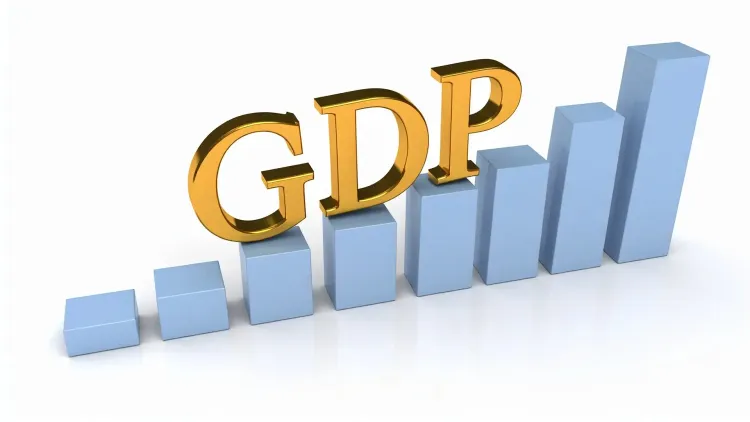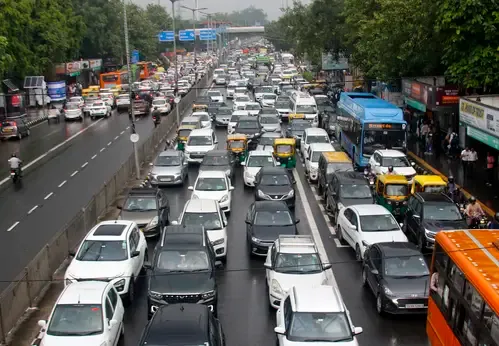How is India’s economy growing so rapidly?

Synopsis
Key Takeaways
- India's economy is projected to grow by 6.6% by 2026.
- China's growth is forecasted to slow to 4.8% during the same period.
- Key growth drivers include domestic consumption, manufacturing, and services.
- Global economic growth is slowing, with advanced economies lagging.
- India must focus on inclusive development for sustainable growth.
New Delhi, Oct 26 (NationPress) The economy of India is witnessing rapid growth fueled by strong domestic consumption, thriving manufacturing sectors, and consistent progress within the services industry, as noted by economists on Sunday.
The latest statistics from the International Monetary Fund (IMF) indicate a promising outlook for the nation, solidifying its status as the world’s fastest-growing major economy.
The IMF's recent forecasts estimate that India's economy will expand by 6.6 percent in 2026, continuing to lead among large economies.
In comparison, the anticipated growth rate for China is projected to decelerate to 4.8 percent over the same timeframe.
Commenting on the IMF’s findings, Dr. Manoranjan Sharma, Chief Economist at Infomerics Ratings, stated, “The IMF data released is incredibly positive and encouraging. India's projected growth rate for 2026 stands at 6.6 percent, whereas China's will be merely 4.8 percent.”
“This ongoing growth can be credited to three primary factors—an upsurge in domestic consumption, a resurgence in manufacturing, and robust performance within the services sector,” he elaborated.
Dr. Sharma further pointed out that India's economic growth is occurring amidst a backdrop of slowing global growth.
The IMF forecasts that the global economy, which expanded by 3.3 percent in 2024, will ease to 3.2 percent in 2025 and 3.1 percent in 2026.
This deceleration has been partially attributed to tariff policies enacted by former US President Donald Trump, which have disrupted international trade flows.
The IMF’s ‘World Economic Outlook’ report anticipates that developed economies will grow by a mere 1.6 percent, while developing nations are expected to see growth of 4.2 percent.
The US economy is projected to grow by 1.9 percent, down from 2.4 percent in 2024, with Spain tipped to be the fastest growing advanced economy at 2.9 percent.
The report also points out that China's economic momentum is faltering due to structural issues such as demographic changes, elevated debt levels, and ongoing challenges in the real estate market.
In contrast, India’s growth trajectory is supported by structural reforms, consistent consumption growth, and significant investments in infrastructure.
Economists assert that India’s enduring growth enhances its appeal for foreign direct investment (FDI) and portfolio inflows, bolstering its global economic position and geopolitical influence.
Nevertheless, they advise that the nation must convert this growth into inclusive development.
“India must capitalize on this opportunity to boost job creation, alleviate poverty, and invest in infrastructure, education, and healthcare,” emphasized Dr. Sharma.
“The upcoming years are crucial for transforming growth into lasting benefits—through enhanced productivity, improved labor absorption, and a focus on skill development,” he concluded.









